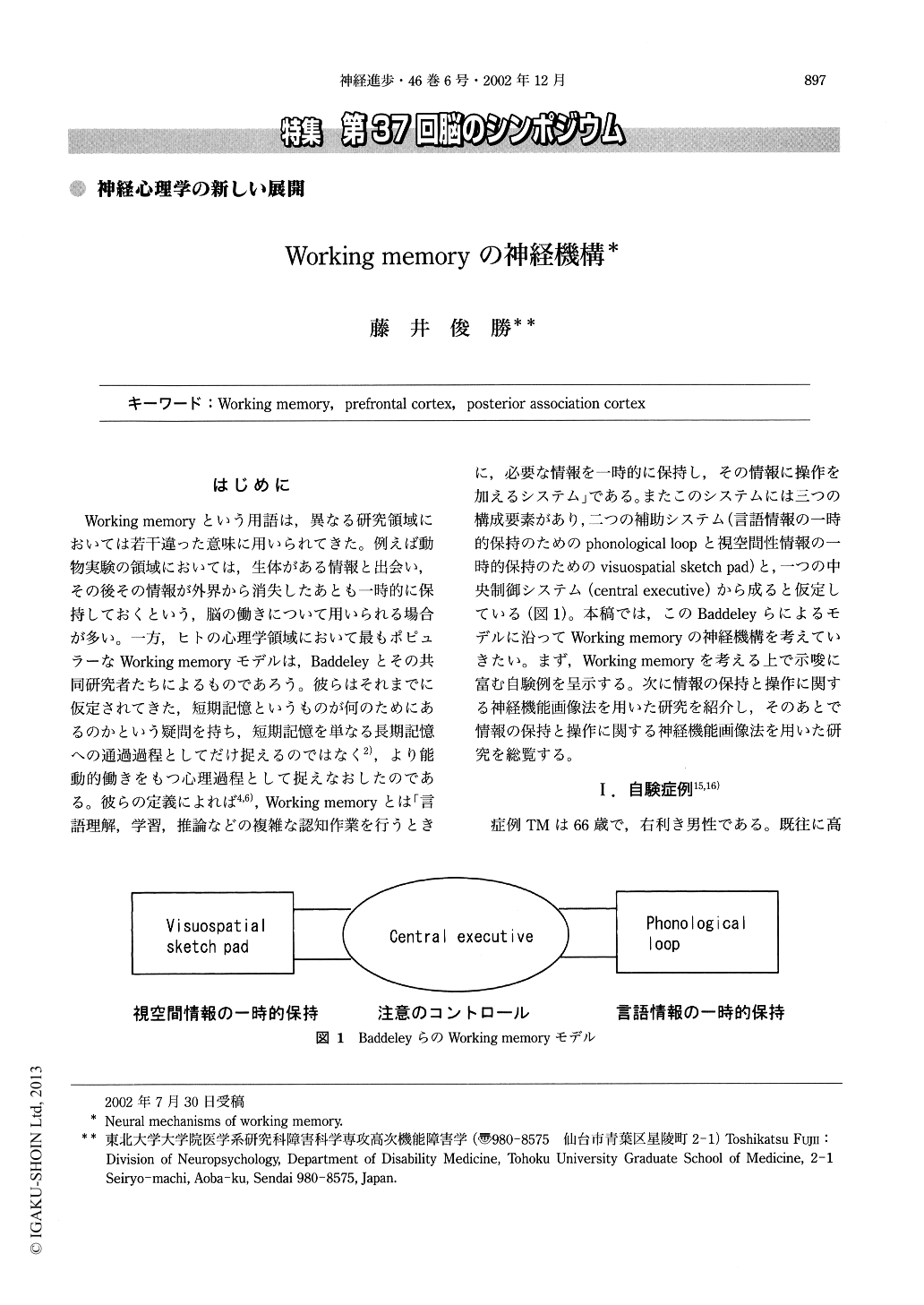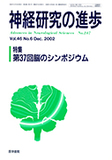Japanese
English
- 有料閲覧
- Abstract 文献概要
- 1ページ目 Look Inside
はじめに
Working memoryという用語は,異なる研究領域においては若干違った意味に用いられてきた。例えば動物実験の領域においては,生体がある情報と出会い,その後その情報が外界から消失したあとも一時的に保持しておくという,脳の働きについて用いられる場合が多い。一方,ヒトの心理学領域において最もポピュラーなWorking memoryモデルは,Baddeleyとその共同研究者たちによるものであろう。彼らはそれまでに仮定されてきた,短期記憶というものが何のためにあるのかという疑問を持ち,短期記憶を単なる長期記憶への通過過程としてだけ捉えるのではなく2),より能動的働きをもつ心理過程として捉えなおしたのである。彼らの定義によれば4,6),Working memoryとは「言語理解,学習,推論などの複雑な認知作業を行うときに,必要な情報を一時的に保持し,その情報に操作を加えるシステム」である。またこのシステムには三つの構成要素があり,二つの補助システム(言語情報の一時的保持のためのphonological loopと視空間性情報の一時的保持のためのvisuospatial sketch pad)と,一つの中央制御システム(central executive)から成ると仮定している(図1)。
Working memory refers to a brain system that provides temporary storage and manipulation of information necessary for complex cognitive tasks. The system consists of two subsidiary systems (the phonological loop and the visuospatial sketch pad) and the central executive. The central executive is a kind of a control center to select and integrate information maintained in these two subsidiary systems and to select an appropriate manipulating system.

Copyright © 2002, Igaku-Shoin Ltd. All rights reserved.


